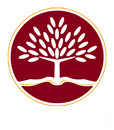 Alsion’s middle-school science curriculum familiarizes students with the subject matter through a discovery-based program which integrates mathematics, reading, writing, and, when appropriate, the social sciences. The main objective of the science courses is to help each student develop scientific literacy, appreciation, and skills to accomplish hands-on experiments, research projects, presentations, field trips and various assignments. Emphasis is placed upon observation, measurement, data organization, and inference. Students are immersed in science during a two-hour period for three weeks of a six-week curriculum cycle throughout the academic year. During the latter part of the cycle, the science curriculum will interchange with social science and vice versa. The three science courses taught in Alsion are Life Science, Physical Science, and Advance Placement (AP) Environmental Science. The 7th- and 8th-grade curricula follow a two-year cycle that focuses one year on Life Science, and the next on Physical Science. This combination of grades will allow students to mentor each other as well as broaden the focus on the present subject material. The 9th-grade class will be studying AP Environmental Science. Throughout all of our science classes, students exploit their knowledge for practical use. In addition to the formal science classes offered, all grade levels are exposed to other scientific disciplines through their annual biome trips and projects. These include geomorphology, geology, meteorology, astronomy and ecology.
Alsion’s middle-school science curriculum familiarizes students with the subject matter through a discovery-based program which integrates mathematics, reading, writing, and, when appropriate, the social sciences. The main objective of the science courses is to help each student develop scientific literacy, appreciation, and skills to accomplish hands-on experiments, research projects, presentations, field trips and various assignments. Emphasis is placed upon observation, measurement, data organization, and inference. Students are immersed in science during a two-hour period for three weeks of a six-week curriculum cycle throughout the academic year. During the latter part of the cycle, the science curriculum will interchange with social science and vice versa. The three science courses taught in Alsion are Life Science, Physical Science, and Advance Placement (AP) Environmental Science. The 7th- and 8th-grade curricula follow a two-year cycle that focuses one year on Life Science, and the next on Physical Science. This combination of grades will allow students to mentor each other as well as broaden the focus on the present subject material. The 9th-grade class will be studying AP Environmental Science. Throughout all of our science classes, students exploit their knowledge for practical use. In addition to the formal science classes offered, all grade levels are exposed to other scientific disciplines through their annual biome trips and projects. These include geomorphology, geology, meteorology, astronomy and ecology.
Life Science
Grades 7 and 8; taught in even-numbered school years
Life Science is taught to a combined class of 7th and 8th graders; it begins with the question, “What is life?” Students explore this question by observing and classifying organisms within their abiotic and biotic systems. They are then introduced to the classification and evolution of cells, organisms, and ecosystems. In addition, they study how specific factors influence and may affect our daily lives. Some of the subject areas that the Life Science course focuses on include: cell biology, viruses, bacteria, protists, fungi, plants, animals, biomes, ecological interactions, photosynthesis, human body systems, genetics. There is a variety of hands-on instruction including using microscopes, performing dissections and projects in the garden. Throughout this course, students are on a journey from the smallest living things to the planet as a whole. It is hoped they reach a deep understanding of the interconnectedness of all life with a gain of practical application.
Physical Science
Grades 7 and 8; taught in odd-numbered school
Physical Science is taught to a combined class of 7th and 8th graders to answer the essential question: “How do things work?” The course introduces the principles of physics and chemistry. With regard to physics, students are introduced to several concepts, which include: Newton’s law of motion, forces, work, energy, sound and light waves, and simple machines. As for chemistry, students are exposed to the following topics: the study of matter and its properties, the periodic table, chemical reactions and bonding. There is also a cycle where students will cover electricity and electronics. The entire Physical Science curriculum allows students to immerse themselves in the subject via a multitude of experiments, projects and presentations, which propose practical applications to learned concepts.
Advanced Placement Environmental Science
Grade 9; taught every school year
After completing Life Science and Physical Science, students explore Environmental Science. Students encounter topics such as biogeochemical cycles, ecological interactions, thermodynamics, energy conservation, pollution, conservation, restoration, human demographics, economics, environmental laws, and environmental policies. In essence, students contemplate the relationship between humans and their effects they have on the environment. Ultimately, they assess and analyze their own ecological footprint and propose practical application on how they and others can be better global citizens. Students apply scientific principles, concepts and methodologies in order to better understand our natural system and to think critically about environmental issues and potential solutions to them.
